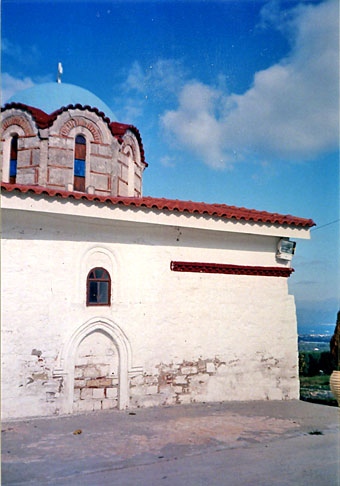Type: Not fully developed, Cross-in Square Church
Date: 13th century
Description:
The church, which has nowadays suffered many damages, is situated on a hill in the village Sycamino, in the west of Oropos. It is a not fully developed cross-in-square church with an Athenian dome and cloisonne masonry. All these features are not still detectable due to the lime wash and the paint alteration of the dome. Gothic morphological traits can be detected such as the interesting gothic doorframe in the southern wall. The discreet use of western traits leads to a re-dating of the monument, according to Pr. Bouras. Thus, Orlandos’ theory that the church can be dated to the 11th – 12th century is overthrown.
The village Sycamino, in the fertile Assopos valley, was in a strategic position. It is mainly mentioned in western documents – mostly during the 14th century – during the years of the Catalan sovereignty, when the village castle was conquered by the missionary order of the Ioannites. There is much evidence concerning their plundering in the descriptions of the Italian notarius and traveler, Niccolo de Martoni. He traveled around Greece in 1395 and described the harbor in the area (today’s Halkoutsi), where he disembarked coming from Euboea. After the Ioannites knights the castle came into the possession of the Florentine Duke of Athens, Antonio Acciajuoli, who placed there his cousin, Fragos, in 1404. Fragos’ daughter, Laodameia, got married to Nerozzo Pitti, owner of the Pitti palace of Florence, and got as a dowry Sycamino castle and the village Paliopanagia near Thebes and Erimokastro. The castle remained under the Pittis till 1460, when it was conquered by the Turks. The Pittis with their eleven children fled to Paliopanagia having as their only fortune the tower in Florence.
Nowadays, only a few foundations are preserved from that castle.
Koder J.-Hild F., Hellas und Thessalia, Tabyla Imperii Byzantini I, Wien 1976, p. 266











